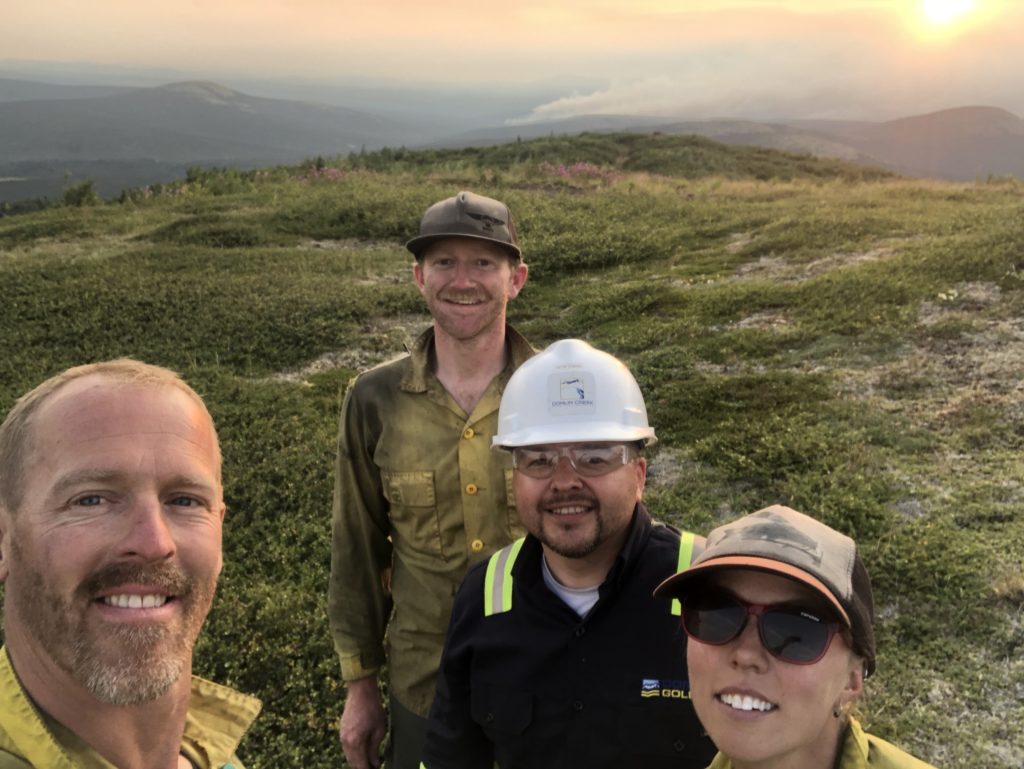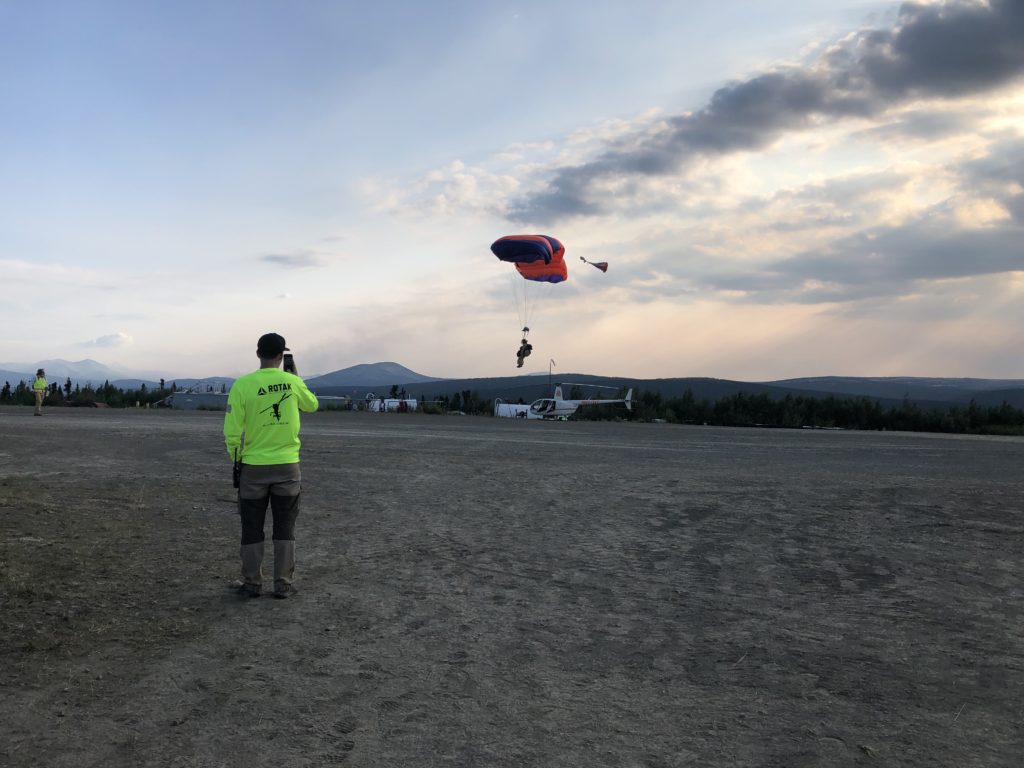Welcome to the electronic version of Storyknife. Sign up to receive the Storyknife eNewsletter via email.
Not A Drill
Donlin Gold Staff Praised for Supporting Wildland Fire Crews
Storyknife, Sept./Oct. 2019 edition
The Donlin Gold motto of “Every person going home safe and healthy every day” took on special meaning when the company’s field camp filled up with wildland firefighters attacking the Smith Creek Fire.
In May, Donlin Gold employees arrived at camp to prepare for a one-year geotechnical drilling program at the proposed mine site.

This field program includes gathering samples of bedrock, weathered rock on top of bedrock, and groundwater, and it is part of a multi-year permitting process to ensure dams and other structures at the proposed mine are designed and built for permanent stability.
Employees had finished setting up camp and begun drilling by early July. Then, on July 11, Alaska experienced 24,000 lightning strikes.
That was the biggest lighting strike day of the Alaska summer, according to federal meteorologists. Sixteen new wildfires started that day, including the Smith Creek Fire near the Donlin Gold camp.
LIGHTNING PROTOCOLS
As part of its safety protocols at camp, Donlin Gold operates a lightning sensor. Crews go into “watch” mode if a strike is recorded within 10 miles of camp. They take shelter if a strike is recorded within 5 miles of camp.
At 5 p.m. on July 11, the camp’s lightning sensor recorded a strike in the 5-mile perimeter. “Crews were sheltered during the event and we could see smoke shortly thereafter,” said Dan Graham, Donlin Gold’s permitting and environmental manager.
Eight BLM smokejumpers arrived at camp the next day to provide structure protection and were soon joined by a hotshot crew from Dalton, California. The next day, non-essential Donlin employees left camp but received the go-ahead to return a few days later.
FIRE SUPPRESSION
It turned out however that the Smith Creek Fire had bigger plans—which included burning through various parts of the project area.
The fire eventually grew to about 70,000 acres, creeping into various drainages and up and over ridges in the general area of the proposed mine.
Four employees, including Shareholder Lyman Duffy of Russian Mission, worked with fire crews to build a fire break circling camp.
The firefighters basically moved into camp, which was reassuring to camp employees, because the fire was visible the whole time, Duffy said.
As the fire progressed, firefighters started back-burning operations—which made camp very smoky—and the Division of Forestry recommended that Donlin Gold suspend all activities.
“We started moving people out on July 19th. The last four left on the 24th,” Graham said.
Lyman was the last employee to leave camp. He stored equipment, checked fuel levels, water, etc., making sure that camp would be able to restart later without any problems.
GRATITUDE FROM FIREFIGHTERS
The overall response to the Smith Creek Fire was managed out of the state Division of Forestry’s McGrath Area Office. At peak levels, 22 firefighters were working out of camp.
Firefighters continued to fight the fire until August 2, putting out hotspots and monitoring fire activity and growth. No structures at Donlin Gold’s camp were harmed.
In subsequent meetings, firefighters and their incident commanders expressed overwhelming gratitude for the hospitality and operational support they received from Donlin Gold staff, said Seth Ross, Assistant Fire Management Officer for the state Division of Forestry.

“I was impressed with the professional coordination efforts between the [Donlin Gold] employees and our incident commanders during complex back-firing and extinguishment operations,” Ross said.
Ross said he was also pleased that the firefighters from California got a chance to see “an incredible amount of Alaskan generosity, kindness and resilience” from camp employees.
RETURNING TO CAMP
Returning to camp was not a simple matter for Donlin Gold, which undertook two reconnaissance trips to determine whether it was a safe work environment for the employees.
Important factors included air quality, ash, hot spots, and ground conditions, according to Graham.
After a formal risk assessment was completed and reviewed by management on August 19, Donlin decided it was safe to resume activities and gave two weeks’ notice to employees that work would begin again on September 3.
Fortunately, all but one employee was able to return to work for the remainder of the 2019 season, and another person who wasn’t available to work earlier in the summer was able to join up after all.
“For the most part, it’s pretty amazing retention,” Graham said.
SAFETY MEASURES
Donlin Gold has updated field season protocols, adding a variety of safety measures to avoid fire hazards such as falling trees or slick ground conditions where the vegetation burned.
Crews have switched from using four-wheelers and trails to using helicopters every day until freeze-up to access the project area. They’ll take new water samples to see how the fire has affected streams in the area and compare them to water baseline studies that have been conducted for over two decades. They’ll also be watching for flareups and reporting those to the Division of Forestry.
Before they could start work, camp staff also received two days of extra training from a retired forester on chainsaw safety and identifying hazards in burned areas.
When Lyman left camp in mid-July, it was very smoky but after rain in early September, he said the air was good again. “It’s good to be back to work.”